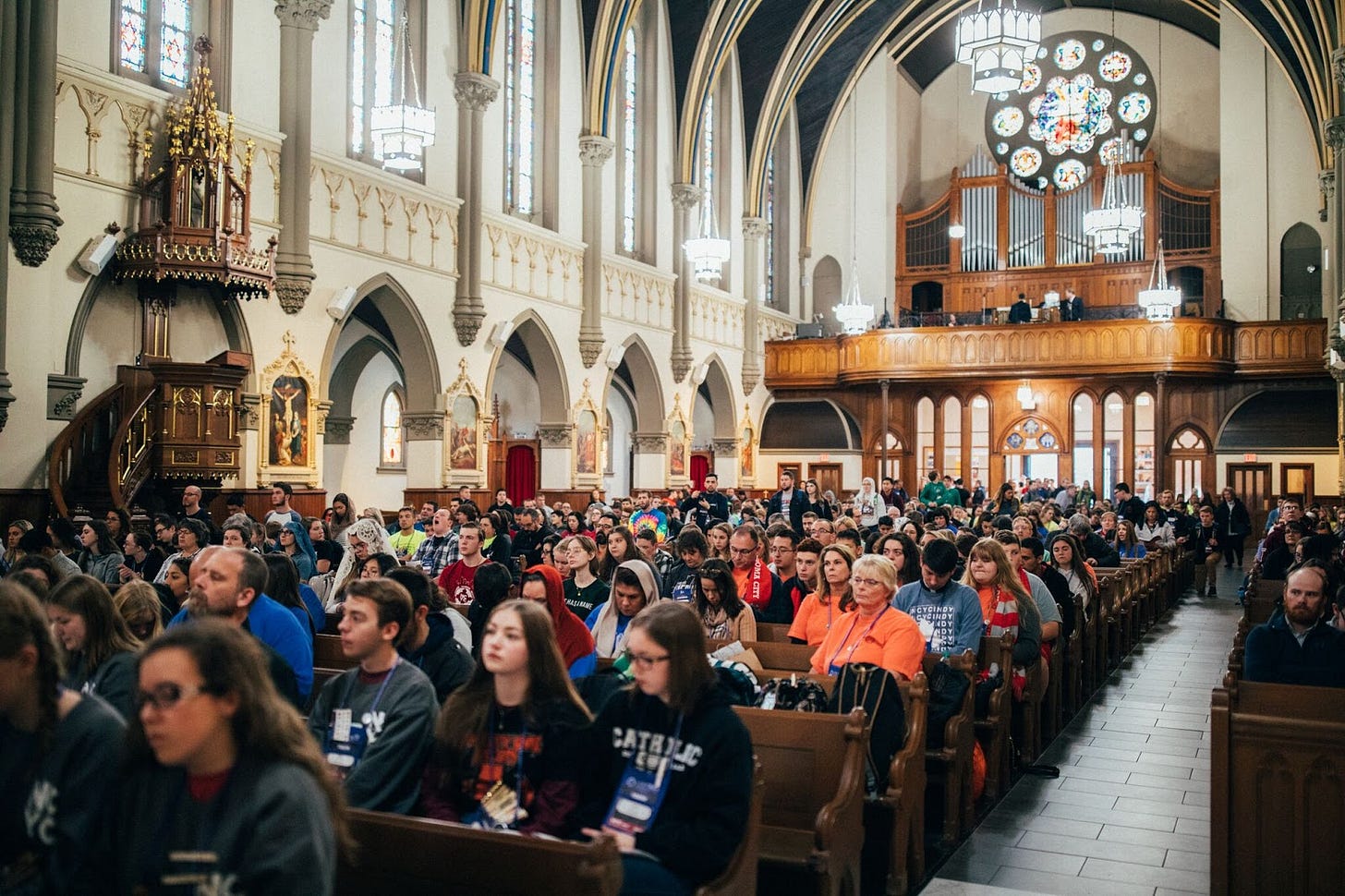Ryan Burge Did Nothing Wrong
Multiple polls suggest Millennials and Gen Z are more Catholic than they were just a few years ago.
Several weeks ago, Professor Burge (in
) published a couple pieces that generated a bit of controversy. It started when he analyzed some data suggesting that the three decade-long trend towards more and more ‘nones’ has halted. In that piece, there was a graph showing that 20 percent of Millennials and Gen Zs are Catholic.This caused quite a stir because not too long ago, analyzing the same data set collected just two years prior, Professor Burge found that only 17 percent of Millennials and 14 percent of Gen Z identified as Catholic. This suggests that either (1) there has been a sizable return to Catholicism among younger generations, or (2) something went wrong and the survey data were unreliable. (Even when everything is done right, probability theory tells us that 5 times out of 100, the results will deviate from reality.)
Because we live in an age dominated by the narrative of secularization, several people could not believe it to be true, and so they pushed back and challenged the findings. Being the good, careful, and conscientious social scientist that he is, Professor Burge went back and revisited this finding, subjecting it to intense scrutiny, noting how odd the finding is and how sharp a break it was from the trend in the years prior to 2023. Like any good applied statistician, he carefully couches his conclusion in uncertainty pending further data.
The original finding was intriguing, and I wanted to see whether it was aberrant, the product of the normal error that occurs from time to time in survey research, or whether the increase in Catholic identification is genuine. To do this, I used two surveys collected in 2023 with large sample sizes. One is the National Public Opinion Reference Survey collected by the Pew Research Center. This survey is important because it is conducted in such a way that its results are used as a benchmark by other polls to ensure their accuracy. The other is the PRRI-Brookings Christian Nationalism Survey.
Young people attending Mass in the Extraordinary Form at the National Catholic Youth Conference. Photo courtesy of the New Liturgical Movement’s website.
Sure enough, the data confirm Professor Burge’s controversial finding. The data collected by PRRI show that 19 percent of Millennials and just under 20 percent of Gen Z belong to the Catholic Church — just 1 point off the 20 and 21 percent, respectively, seen in Professor Burge’s analysis. While the Pew data suggest that there has been no increase in Catholic identification among Millennials (instead, dropping by 1 percentage point since 2022 to 15 percent), more than 20 percent of Gen Z is Catholic.
And so we have some tentative confirmation of that earlier finding that younger generations have become more Catholic. It would appear that the 7-point jump in Catholic identification among Gen Z between 2021 and 2023 was genuine, and if the earlier estimate was off, it was not by much. While the evidence of a jump in Catholic identification among Millennials is more tentative, the fact that there is some confirmation of the earlier surprising finding suggests that we should not be too quick to dismiss the possibility of such a bump.
Of course, the jury does and should remain out, open to additional evidence that might reassert the expectation that religion in the United States is in a state of terminal decline. However, these surveys suggest that we should be skeptical of knee-jerk reactions dismissing findings that challenge our assumptions about how the world works. If these findings are genuine, confirmed in yet more surveys, it will be interesting to see whether the bump in Catholic identification represents a durable bucking of the trends underlying modernity or merely a “vibe” that briefly gripped the youth before a new trend caught on.



